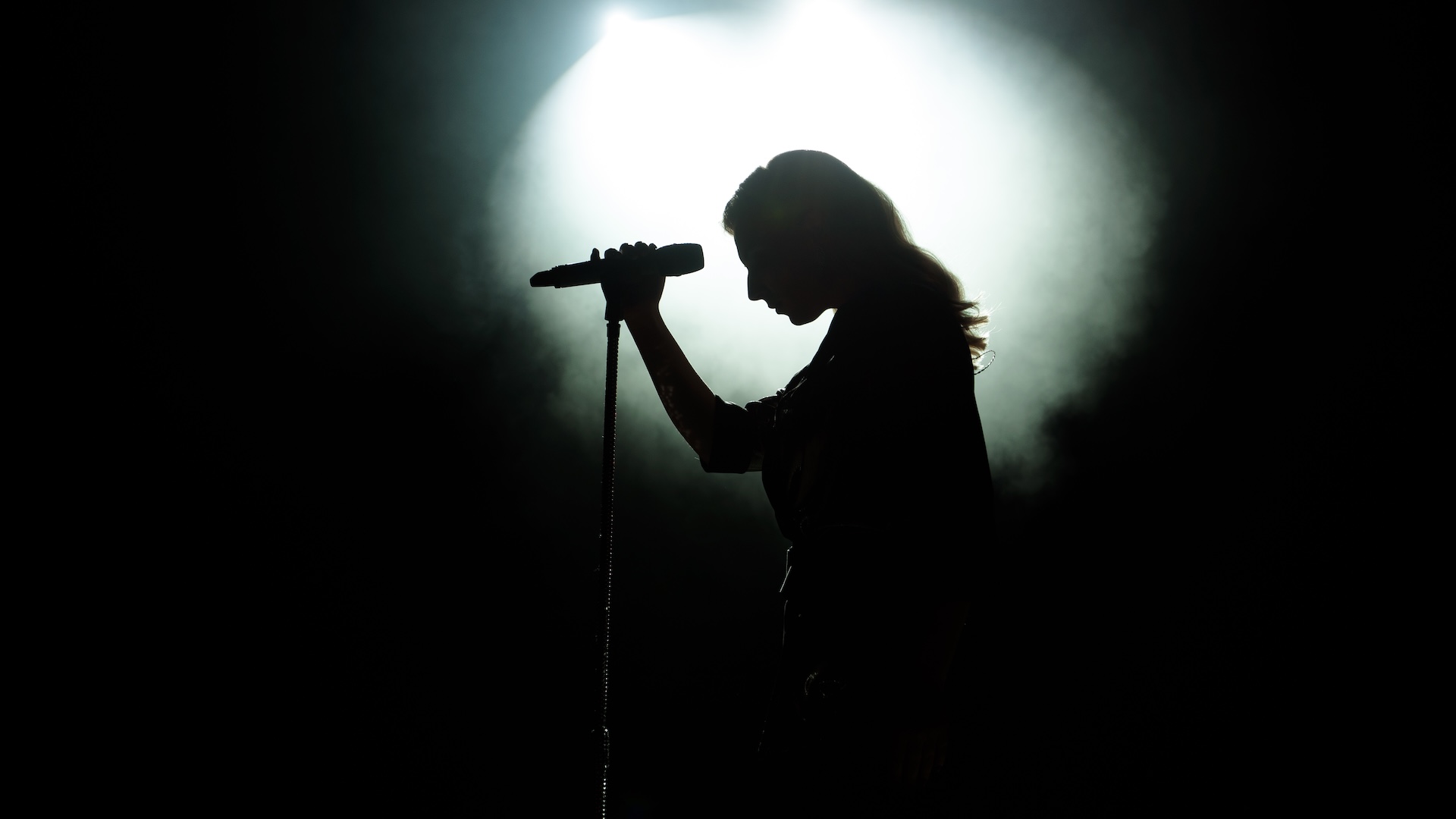
Images: Life at Antarctica's Concordia Station
Dwindling sunlight

British doctor Alexander Kumar signed on for the adventure of a lifetime when he was chosen for a yearlong stay at the Concordia Research Station, a joint French-Italian outpost in the middle of the East Antarctic Ice Sheet. During the brutal cold and permanent darkness of the Antarctic winter, Kumar and the 12 European scientists and staff at the station kept busy and kept up their spirits in a place of haunting, yet potentially deadly beauty.
Above, Kumar stands alone on the ice sheet, in the dwindling light that signals the approach of Antarctica's winter season.
Click through to get a taste of life in one of the most isolated places on Earth.
Home, cold home
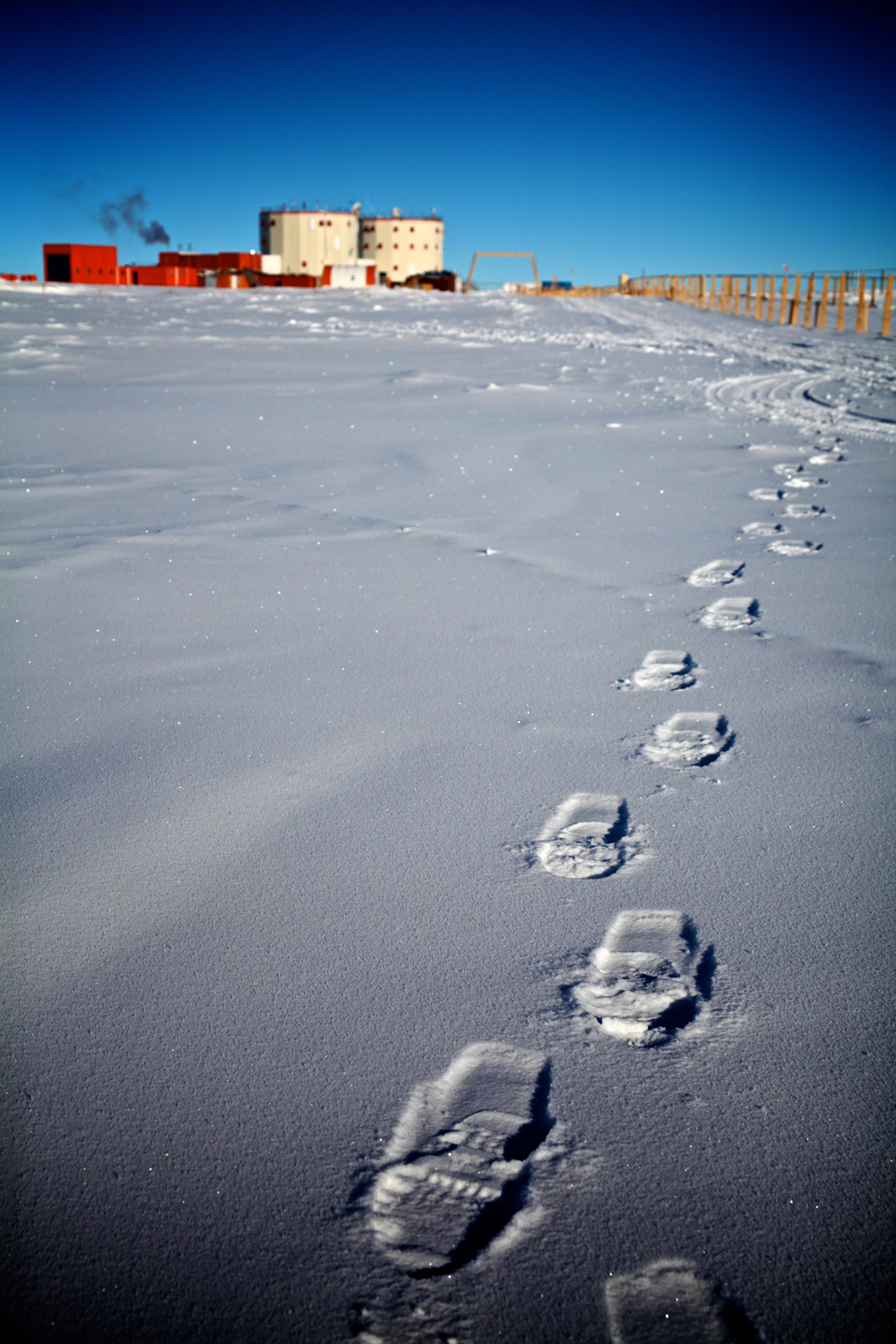
Concordia Research Station looms in the distance. The space-age building can house up to 90 people during the summer months, but during the winter, only a handful stay behind. Kumar is tasked with keeping the remaining residents healthy, but is also conducting research on them for the European Space Agency. Concordia is so remote, it is used as an analog for human spaceflight.
A refreshing dip

Before winter darkness descends, Kumar takes advantage of the comparatively balmy weather to take a dip in an ad-hoc swimming pool a meltwater tank the enterprising Concordia residents occasionally put to more luxuriant use when the weather allowed. It isn't a dip for the faint of heart. Kumar said that although the water was warm, the outside temperature was many tens of degrees below zero.
Sunset at the bottom of the world
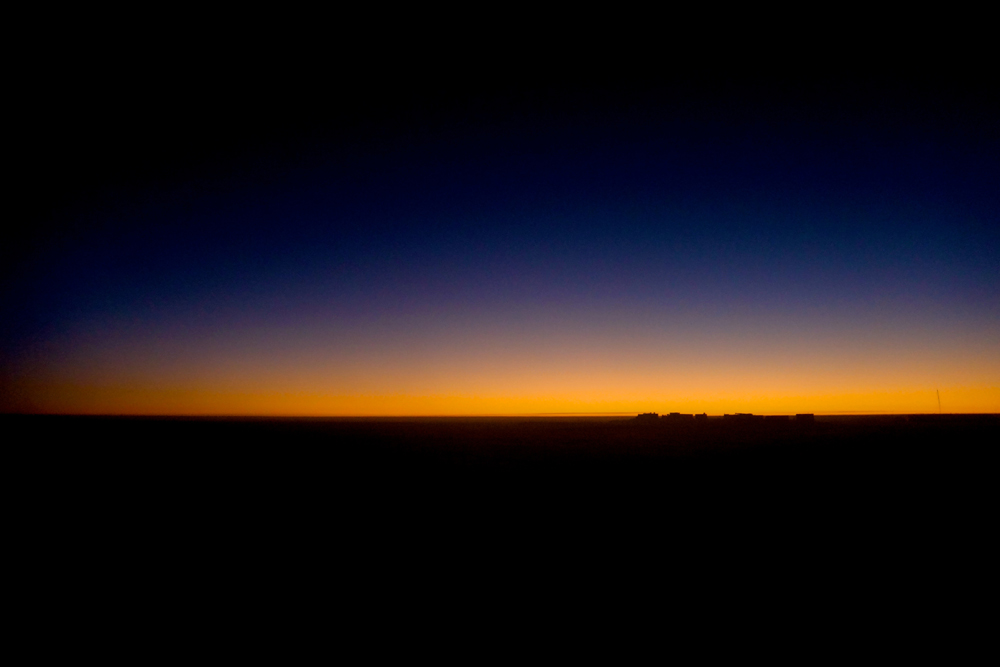
As winter approaches, the sun barely creeps above the vast, empty plateau that surrounds Concordia Station. In the winter, temperatures dip to minus 100 degrees Fahrenheit (minus 73 degrees Celsius).
Tower at twilight
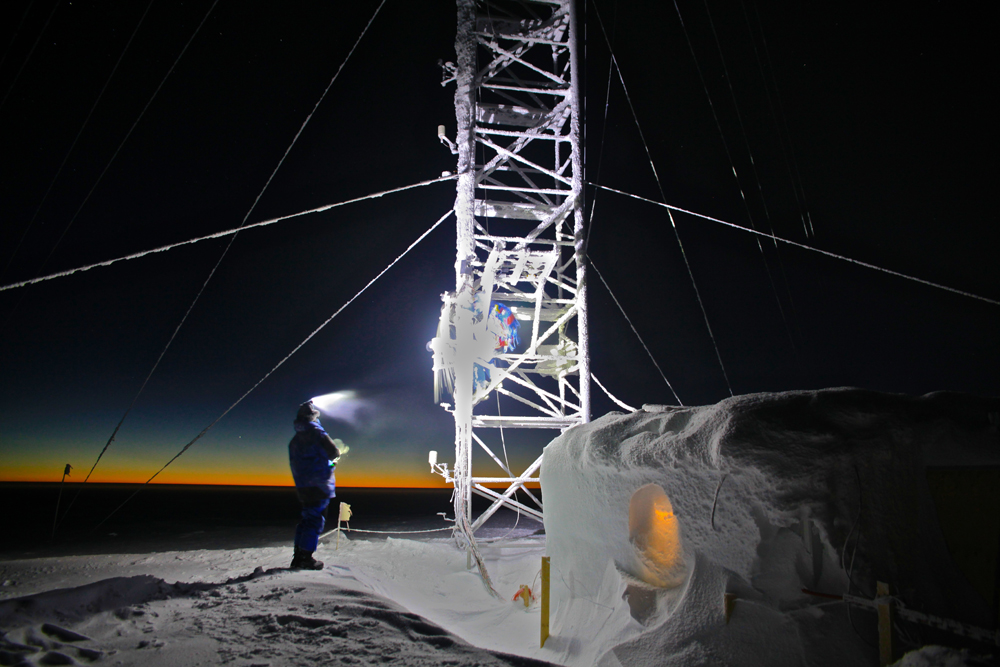
Last light of the season. Kumar said that to the naked eye, this scene appeared almost totally dark, yet a long camera exposure reveals a dim ribbon of light along the horizon as Concordia staff climb an ice-covered tower near the station for maintenance.
Beautiful perspective
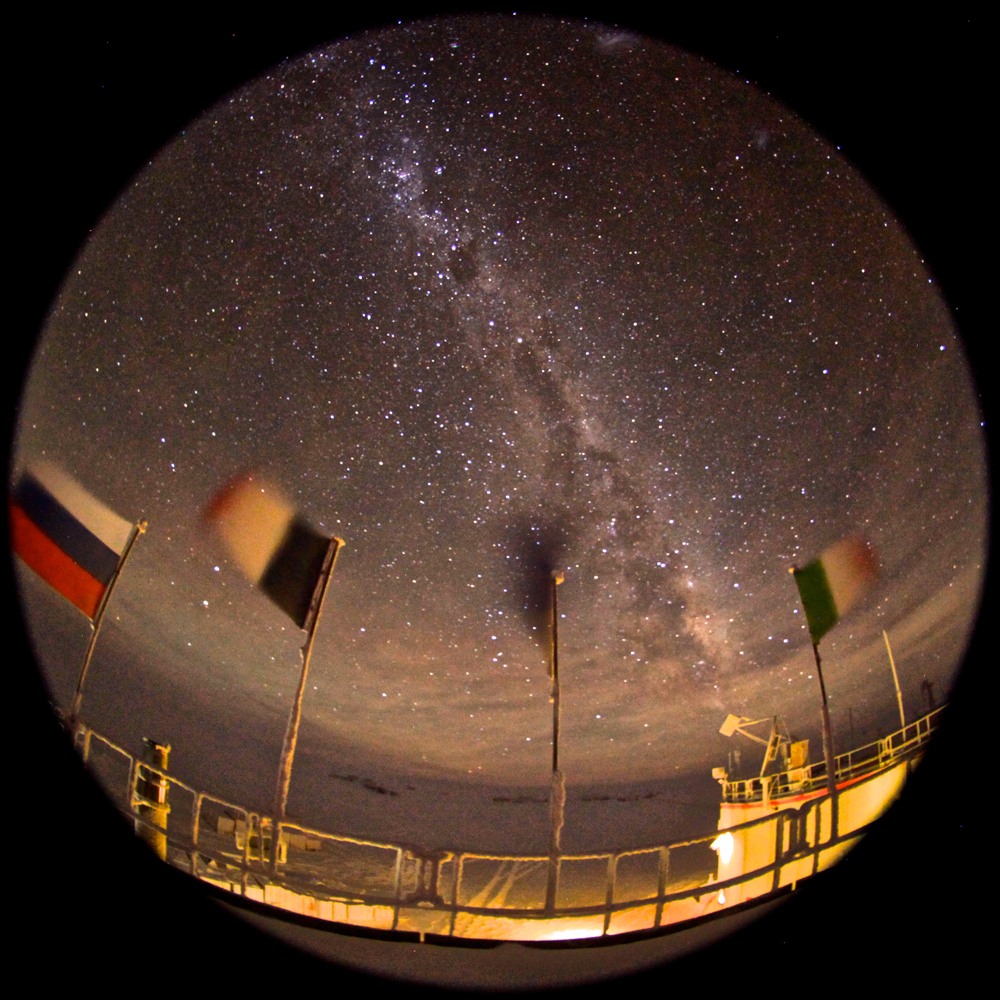
The sun disappeared for good on May 4, and wouldn't reappear again for more than three months. Yet celestial lights are revealed in the darkness. The Milky Way shimmers overhead, as flags of distant European nations stand like sentinels over the station.
Bright night

Kumar stands outside Concordia at around 2 a.m., under a bright moon. His face is covered with a mask, since any skin exposed to the bitter cold would almost immediately be frostbitten.
Get the world’s most fascinating discoveries delivered straight to your inbox.
Family and friends

The Concordia overwintering crew. Kumar, in a yellow shirt, sits on the couch. Despite their lonely locale, the scientists and other staff have some creature comforts to soften the effects of so many weeks with no sun. There's a pool table, a tiny movie theater, table tennis and a talented chef (Giorgio Deidda, pictured on the left in the apron) to feed them. And the crew has come up with other inventive diversions, too.
Tea time

On June 5, during the Queen's Diamond Jubilee celebrations, Kumar, the lone Brit at the station, threw a party to mark the occasion. Here, the station crew gathers on the station roof in the midwinter darkness for scones and tea that Kumar made.
Local vitals
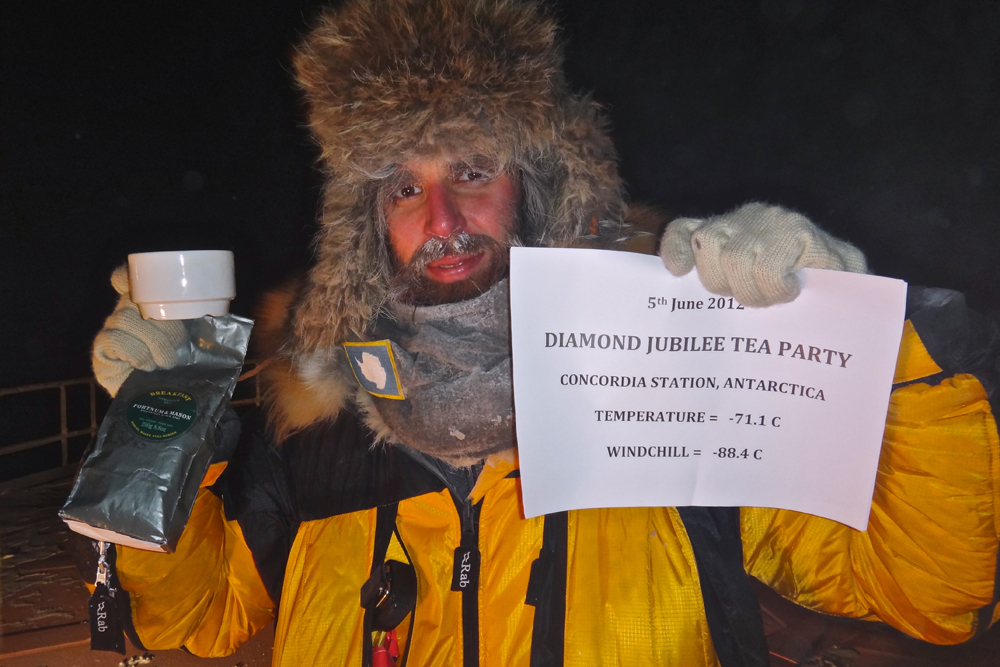
While his fellow Brits celebrate Elizabeth II's 60th year on the throne in more comfortable climes, Kumar holds a cup of tea and a sign with the vital statistics at Concordia: minus 95 degrees F (minus 71 degrees C), with a wind chill of minus 126 degrees F (minus 88 degrees C).
A time to work

Though there's some time for play at Concordia, much of the time is dedicated to research. Above, Kumar at work in his lab. He has been gathering samples from his colleagues and himself for later analysis in labs across Europe. The ESA is looking to better understand the effects of prolonged darkness and isolation on the human body in a quest aimed at preparing for extended trips in space.
